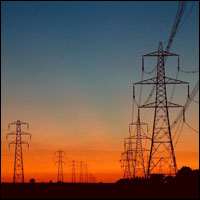With India’s electricity demand expected to more than double in the next decade, the country’s power sector is confronted with two main challenges – adequately powering the projected economic growth and bringing electricity to the 300 million citizens who currently lack access, according to a recently released report by the Paris-based International Energy Agency.
“Very few countries have faced challenges of the magnitude that confront India in its quest to maintain strong economic growth while providing electricity to its 300 million citizens who now lack access. The country will need to tap all energy sources and technologies to meet the scale of energy demand projected over the next few decades. In establishing the framework for its low-carbon growth strategy, and with fossil fuels currently providing more than three-quarters of electricity generated, India will need to be mindful of environmental and social factors,” the report titled ‘Energy Technology Perspectives 2014 – Harnessing Electricity’s Potential’ said, adding that the country was increasing both power capacity and generation and making progress in addressing the institutional and structural barriers that hampered the much needed expansion of the power sector.
Focusing on the various challenges including the environmental issues being faced by the Indian power sector due its continued reliance on fossil fuels, the report said the country would need to heavily supplement its domestic supplies of coal and gas with imports which in turn was going to impact power plant design, technology, operation and regulations governing power tariffs.
At present, 68 percent of the country’s electricity comes from coal.
“At 33.1 percent, the average efficiency of its coal-fired power plants is low and emissions (over 1,100 grams of CO2 per kilowatt hour [gCO2/kWh]) are well above global state-of-the-art levels (750 gCO2/kWh). Policies to halt construction of subcritical units and encourage more efficient technology are insufficient to achieve the CO2 emissions reduction needed,” the report said.
 Supporting India’s ambitious plans aimed at better exploiting the abundant potential for generation from wind and solar while also expanding geothermal, biomass and small hydropower, the report pointed out that expanding nuclear and large-scale hydropower
Supporting India’s ambitious plans aimed at better exploiting the abundant potential for generation from wind and solar while also expanding geothermal, biomass and small hydropower, the report pointed out that expanding nuclear and large-scale hydropower
capacity would assist in managing congested grids and integrating variable renewables capacity. Currently, nuclear power constitutes a small share of the country’s total power generation.
The report warned that bureaucratic hurdles and high cost of financing new projects could slow down India’s ambitious plans in the wind and solar power sectors. To facilitate capacity expansion, it said, more effective procedures needed to be developed so that issues related to land acquisition and grant of clearances for building on or near protected areas got resolved in a timely manner.
In order to efficiently deliver power to consumers and enhance the potential for expanding generation, the report stressed on further expansion of the transmission and distribution system and their effective operation.
The report said that power tariffs could be set at levels that prompted utilities to improve performance of power generation plants and at the same time allowed for reasonable profits on generation. It called for review of the practice of providing free or heavily subsidized electricity.
“The projected demand growth should make India an attractive opportunity for energy sector investors. Addressing the complex administrative processes and investment risks is vital to bringing down the high cost of financing new projects,” the report said.
The IEA is an autonomous organisation which works to ensure reliable, affordable and clean energy for its 29 member countries. Its main areas of focus are energy security, economic development, environmental awareness and engagement worldwide. India is not a member of the IEA.
The IEA report presented different scenarios to show how the global energy system, particularly electricity production and usage, could evolve between now and 2050.











